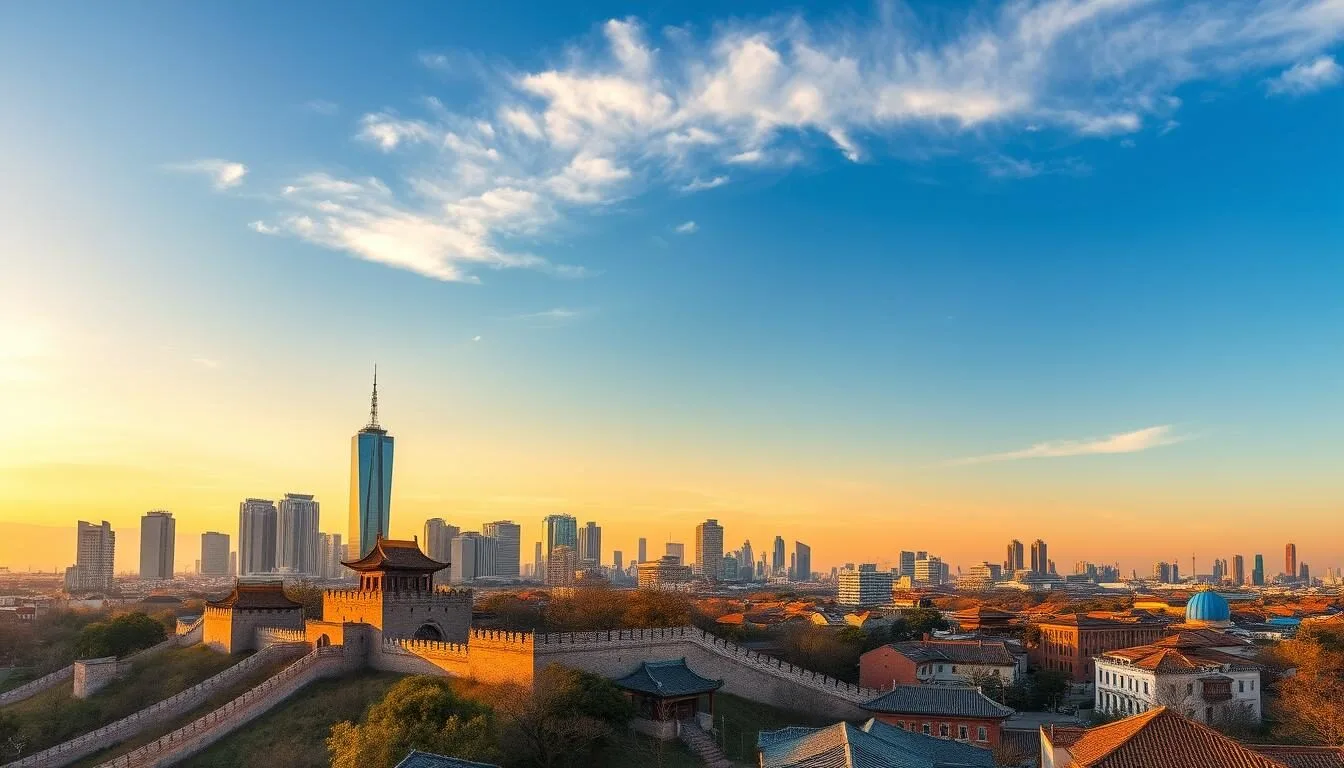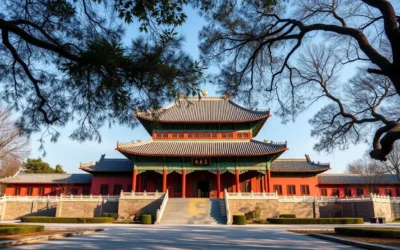✓ Accommodations✓ Flights✓ Rental Cars✓ Tours & Activities
Did you know that Xi’an’s Terracotta Army contains over 8,000 life-sized soldiers, each with unique facial features and expressions? This ancient marvel is just one of the incredible attractions awaiting you in Xi’an, a city where 3,000 years of Chinese history comes alive. As the starting point of the legendary Silk Road and capital for 13 Chinese dynasties, Xi’an offers visitors an unparalleled journey through China’s rich cultural heritage while embracing modern vibrancy.
Planning Your Xi’An China Trip
Xi’an deserves at least 2-3 days to properly explore its wealth of historical and cultural attractions. The city offers a perfect blend of ancient wonders and modern amenities, making it an essential stop on any China itinerary. Before diving into the best things to do in Xi’an, let’s cover some essential planning information to help you make the most of your visit.
Ready to explore Xi’An?
Start planning your journey to this ancient Chinese capital with these essential travel resources:
Getting to Xi’An
Xi’an is well-connected to major cities throughout China and internationally. The city is served by Xi’an Xianyang International Airport, which offers flights to destinations across China and several international cities.
By Air
Xi’an Xianyang International Airport is located about 40km from the city center. International flights connect Xi’an with cities like Hong Kong, Seoul, Bangkok, and Tokyo, while domestic routes link to all major Chinese cities including Beijing, Shanghai, and Guangzhou.
By Train
High-speed trains are an excellent option for traveling to Xi’an from other Chinese cities. The Beijing to Xi’an high-speed train takes approximately 5-6 hours, while Shanghai to Xi’an takes about 6-7 hours. Xi’an has two main railway stations: Xi’an Railway Station (in the city center) and Xi’an North Railway Station (for most high-speed trains).
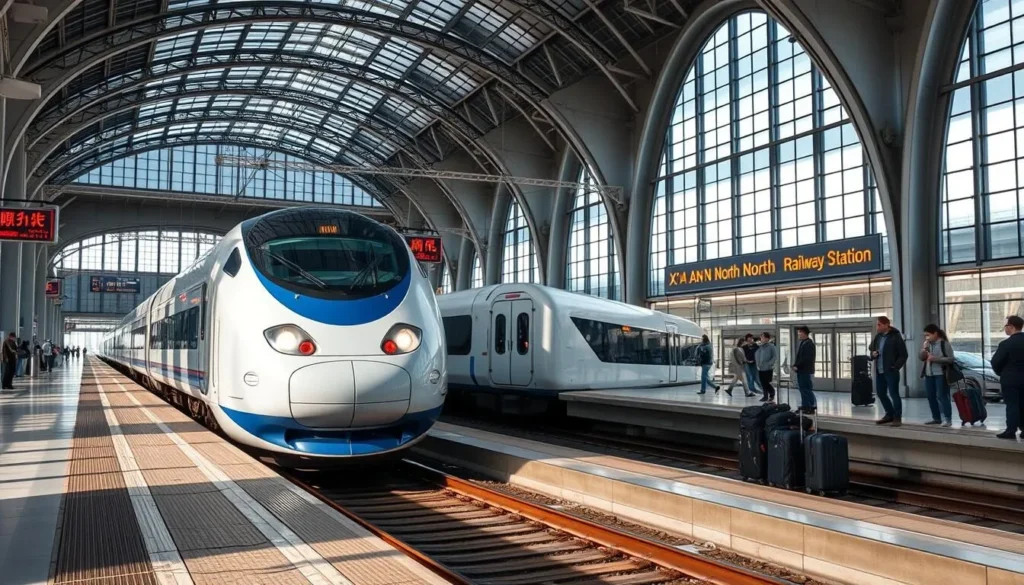
Best Time to Visit Xi’An
Xi’an experiences four distinct seasons, each offering a different perspective on the city. The best time to visit Xi’an is during spring (March to May) and autumn (September to November) when temperatures are mild and rainfall is moderate.
Spring (March-May)
Pleasant temperatures between 10-25°C (50-77°F) with blooming flowers make this an ideal time to explore outdoor attractions. Occasional rain showers occur but rarely disrupt travel plans.
Autumn (September-November)
Clear skies and comfortable temperatures ranging from 15-25°C (59-77°F) create perfect conditions for sightseeing. The autumn foliage adds beautiful colors to the city’s parks and mountains.
Summer & Winter
Summer (June-August) can be hot with temperatures reaching 32°C (90°F) and occasional heavy rainfall. Winter (December-February) is cold with temperatures between -5°C and 8°C (23-46°F) but offers fewer crowds.
Getting Around Xi’An
Xi’an is a relatively compact city with excellent public transportation options that make exploring its attractions convenient and affordable.
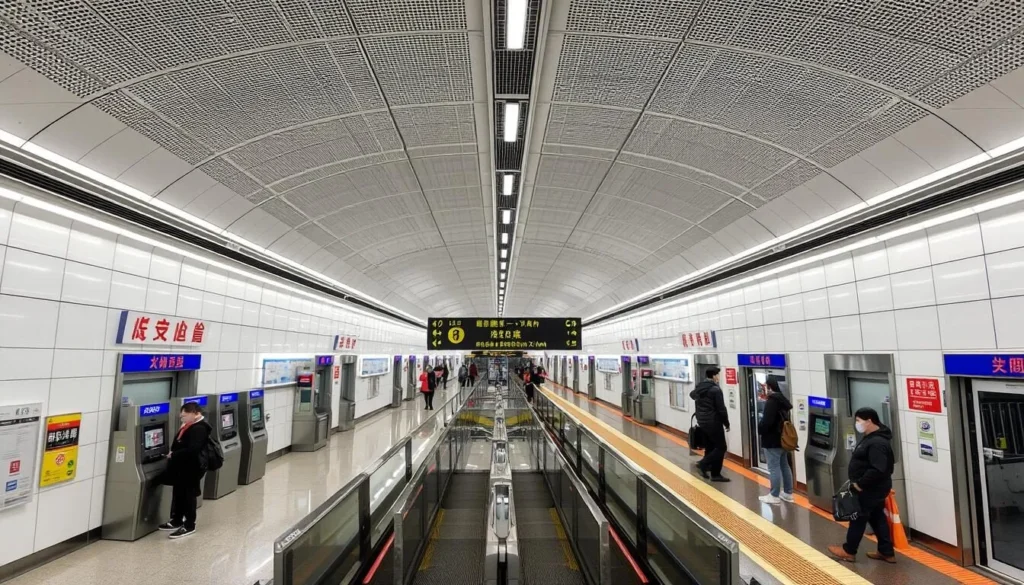
Metro
Xi’an’s efficient metro system is the fastest way to travel around the city. Currently, there are multiple lines connecting major attractions, with Line 2 (east-west) being particularly useful for tourists as it connects the railway station with popular sites. A 24-hour pass costs approximately $2 and offers excellent value.
Bus
An extensive bus network covers the entire city, including areas not served by the metro. Tourist buses (numbers 5, 6, 8, and 610) connect most major attractions. Bus fares are inexpensive, typically 1-2 yuan per trip.
Taxi
Taxis are abundant and relatively affordable in Xi’an. Most drivers don’t speak English, so it’s advisable to have your destination written in Chinese characters. The Didi app (China’s equivalent of Uber) offers a convenient English interface for ordering taxis.
Cycling
Renting a bicycle is a popular way to explore the Ancient City Wall, which features a 14km cycling path along its perimeter. Bike rentals are available at several entry points to the wall.
Travel Tip: Xi’an metro stations have airport-style security checks at every entrance. While these move quickly, allow a few extra minutes when using the metro, especially during rush hours.
Where to Stay in Xi’An
Choosing the right location for your accommodation can significantly enhance your Xi’an experience. The city offers lodging options for every budget, from luxury hotels to budget-friendly hostels.
Within the City Walls
Staying within Xi’an’s ancient city walls puts you at the heart of the action. The area around the Bell Tower is particularly convenient, with numerous restaurants, shops, and attractions within walking distance. Hotels here range from luxury international chains to boutique options.
Muslim Quarter
For foodies and those seeking a more authentic experience, the vibrant Muslim Quarter offers convenient access to Xi’an’s best street food and cultural experiences. Accommodation tends to be mid-range to budget-friendly.
Qujiang New District
This modern area near the Big Wild Goose Pagoda offers upscale accommodations with more space and amenities. It’s slightly removed from the hustle and bustle but well-connected by metro Line 3.
Find Your Perfect Xi’An Hotel
Browse a wide selection of accommodations to suit every budget and preference:
Top Things to Do in Xi’An China
Xi’an boasts an impressive array of historical and cultural attractions that showcase its significance as an ancient imperial capital. Here are the must-visit sites that should be on every traveler’s itinerary:
1. Marvel at the Terracotta Army
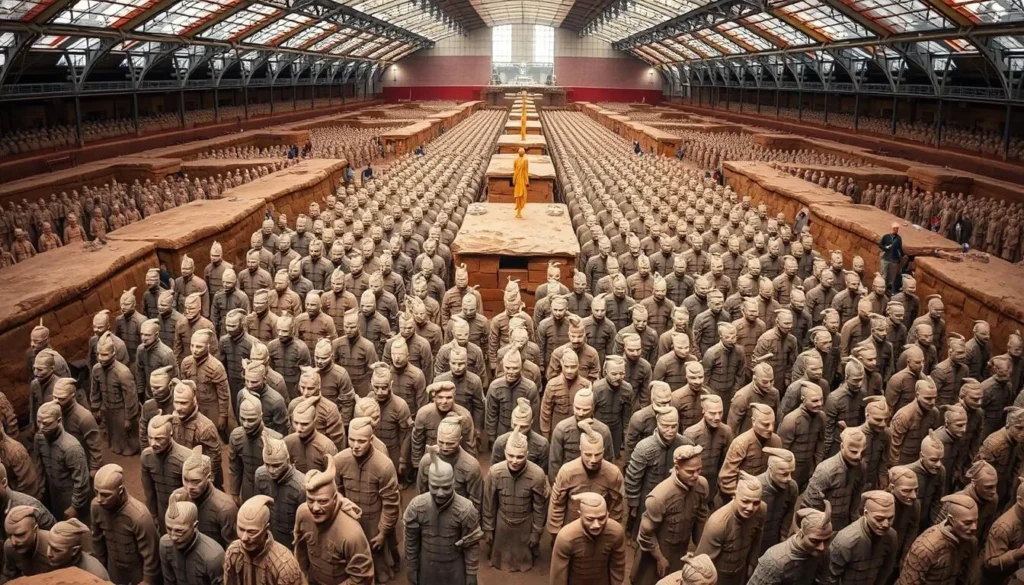
Often called the “Eighth Wonder of the World,” the Terracotta Army is Xi’an’s most famous attraction and a UNESCO World Heritage site. Discovered in 1974 by local farmers digging a well, this vast underground army was created to guard Emperor Qin Shi Huang in the afterlife. Over 8,000 unique soldiers, horses, and chariots were meticulously crafted over 2,200 years ago, with each warrior featuring distinct facial features and expressions.
Visiting Tips: Located about 40km east of Xi’an city center, the Terracotta Army museum is best visited in the morning to avoid crowds. Allow 3-4 hours for your visit. Take bus 307 from the Xi’an Railway Station or tourist bus 5 (306) from the Bell Tower.
Experience the Terracotta Warriors
Skip the line and enjoy expert guidance at this archaeological wonder:
Book Terracotta Army Tour
2. Cycle Along the Ancient City Wall
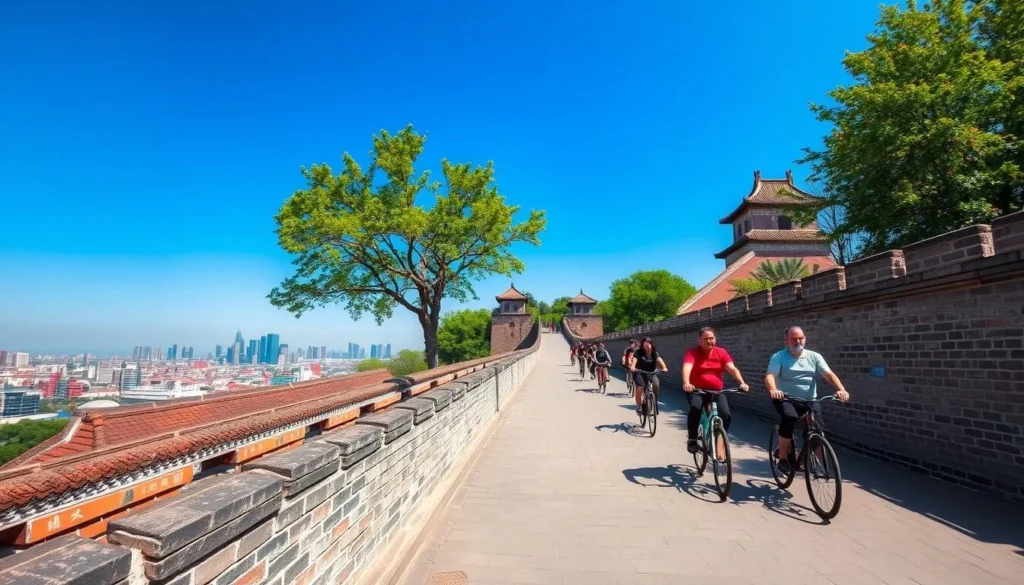
Xi’an’s Ancient City Wall is one of the best-preserved urban fortifications in China and the most complete ancient city wall in the world. Built in the 14th century during the Ming Dynasty, this massive structure stands 12 meters high, 12-14 meters wide, and stretches for 14 kilometers in a rectangle around the old city center. Cycling along the top of the wall is one of the most enjoyable ways to experience this architectural marvel and get panoramic views of both the old and new sections of Xi’an.
Cycling Info: Bike rentals are available at each of the four main gates. A standard rental costs about 45 yuan for 100 minutes, which is enough time to complete the full circuit. The South Gate (Yongning Gate) is the most impressive entrance to start your journey.
3. Explore the Muslim Quarter
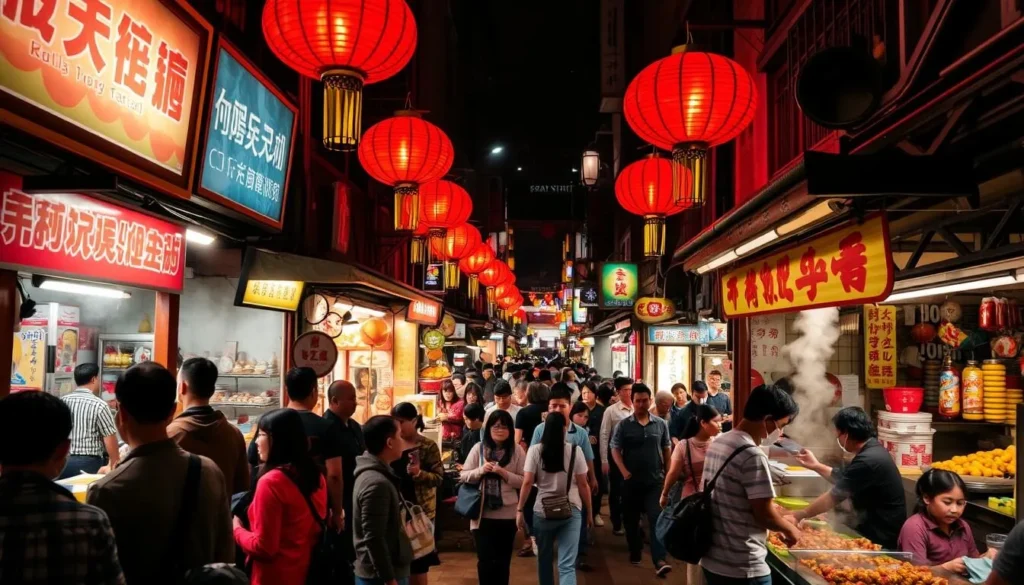
The vibrant Muslim Quarter, located in the heart of Xi’an, is a fascinating blend of Chinese and Islamic influences. This bustling area is home to Xi’an’s Hui Muslim community, whose ancestors traveled the Silk Road during the Tang Dynasty. The narrow streets are lined with over 300 food stalls and small restaurants serving authentic local cuisine. Don’t miss trying Xi’an’s famous dishes like roujiamo (Chinese hamburger), yangrou paomo (lamb soup with bread), and biang biang noodles.
Best Time to Visit: The Muslim Quarter is most atmospheric in the evening when food stalls are in full swing and the area is illuminated by colorful lights. Visit between 5-9 PM for the best experience.
4. Visit the Giant Wild Goose Pagoda
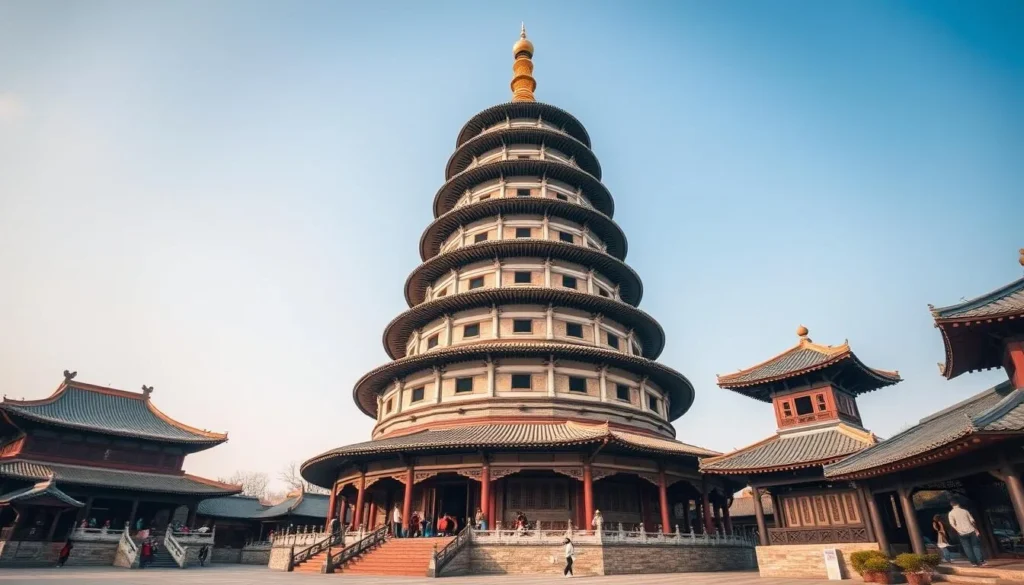
The Giant Wild Goose Pagoda (Big Wild Goose Pagoda) is one of Xi’an’s most iconic landmarks and a UNESCO World Heritage site. Built in 652 during the Tang Dynasty, this seven-story pagoda was constructed to house Buddhist sutras and figurines brought back from India by the famous monk Xuanzang. His journey later inspired the classic Chinese novel “Journey to the West.” The pagoda stands 64 meters tall and offers panoramic views of the city from its upper floors.
In the evening, don’t miss the spectacular music fountain show at the North Square of the pagoda—the largest musical fountain in Asia. The water dances in sync with music and colorful lights, creating a magical atmosphere.
5. Discover the Shaanxi History Museum
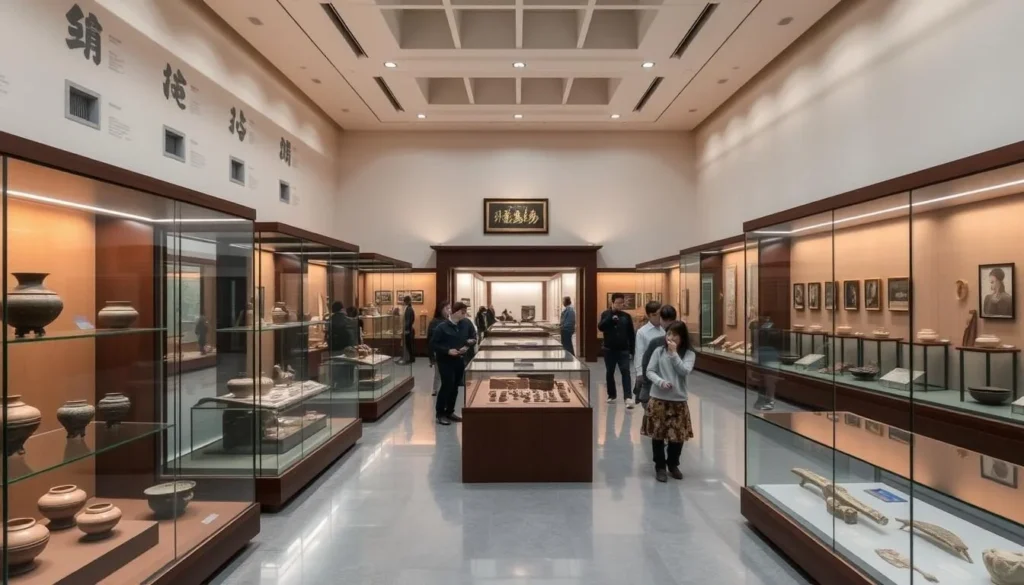
The Shaanxi History Museum offers an excellent introduction to the rich cultural heritage of Xi’an and the surrounding Shaanxi Province. This modern museum houses over 370,000 artifacts spanning from prehistoric times to the Qing Dynasty, including treasures from the Zhou, Qin, Han, and Tang dynasties. Highlights include Tang Dynasty gold and silver wares, Ming and Qing porcelain, and ancient bronze vessels.
Visitor Information: Admission is free but requires a reservation. The museum issues a limited number of tickets each day, so arrive early. Closed on Mondays. English audio guides are available for rent.
6. Admire the Bell Tower and Drum Tower
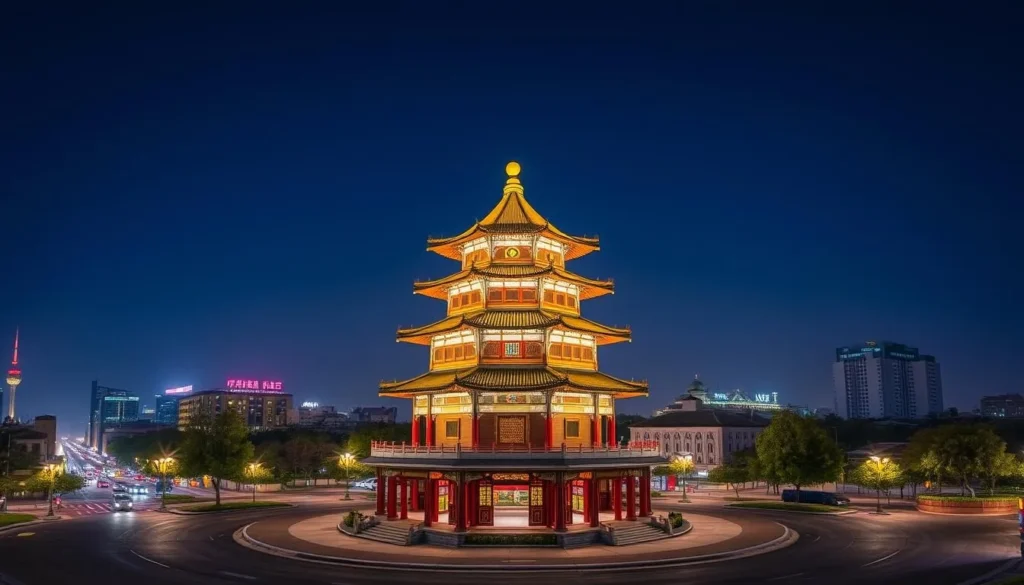
Standing at the geographical center of Xi’an, the Bell Tower and Drum Tower are two of the city’s most recognizable landmarks. The Bell Tower, built in 1384 during the Ming Dynasty, stands 36 meters tall and once housed a large bell that was rung at dawn. About 200 meters west is the Drum Tower, where drums were beaten at sunset to mark the end of the day.
Both towers feature traditional Chinese architecture with intricate wooden structures and colorful decorations. Visitors can climb to the top of each tower for excellent views of the city. The towers are particularly beautiful when illuminated at night.
Performance Times: The Drum Tower features traditional drum performances several times daily at 9:30 AM, 10:30 AM, 11:30 AM, 2:30 PM, 3:30 PM, 4:30 PM, and 5:30 PM.
7. Experience Mount Huashan

For adventure seekers, a day trip to Mount Huashan offers an unforgettable experience. Located about 120km east of Xi’an, this sacred Taoist mountain is famous for its precipitous cliffs, narrow paths, and breathtaking views. Mount Huashan features five peaks, with the most challenging being the South Peak at 2,154 meters. The mountain is notorious for its “plank walk in the sky”—a narrow wooden pathway attached to a vertical cliff face that’s considered one of the world’s most dangerous hiking trails.
Safety Note: While the mountain has been made safer with the addition of chains, harnesses, and improved paths, it’s still a physically demanding climb. Consider taking the cable car for part of the journey if you’re not an experienced hiker.
Adventure Awaits at Mount Huashan
Experience the thrill of China’s most dramatic mountain with a guided tour:
Book Mount Huashan Tour
Cultural Experiences in Xi’An
Beyond its historical sites, Xi’an offers numerous opportunities to immerse yourself in Chinese culture through hands-on experiences and performances.
Tang Dynasty Show
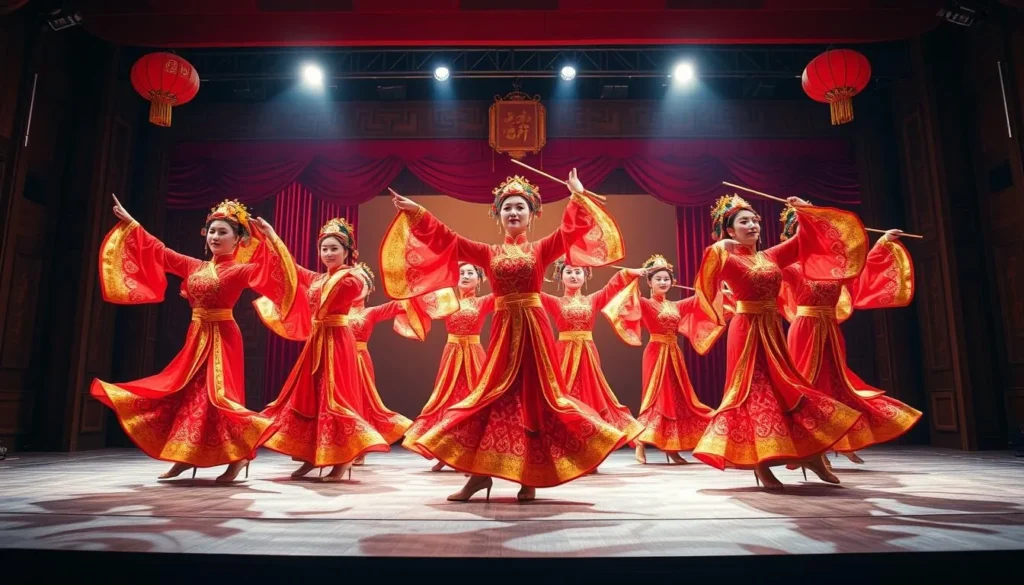
Experience the splendor of China’s golden age with a Tang Dynasty Show, which combines music, dance, and elaborate costumes to recreate the artistic achievements of the Tang Dynasty. Most performances include a dumpling banquet featuring dozens of varieties of this local specialty.
Hanfu Experience
Try on traditional Hanfu clothing—the historical dress of the Han Chinese—for a memorable photo opportunity at the Giant Wild Goose Pagoda or other historical sites. Many rental shops offer professional photography services to capture your experience.
Calligraphy and Paper Cutting
Learn the ancient art of Chinese calligraphy or paper cutting through workshops offered at the Tang Bo Art Museum. These hands-on experiences provide insight into traditional Chinese artistic practices and make for unique souvenirs.
Make Your Own Terracotta Warrior
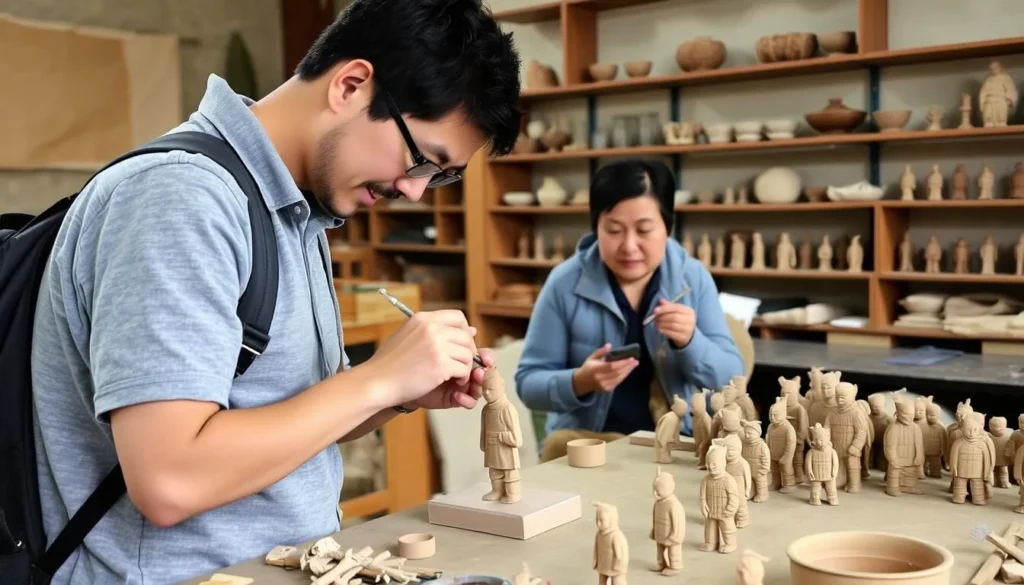
Several workshops near the Terracotta Army site offer the opportunity to create your own miniature warrior under the guidance of local artisans. This interactive experience provides a deeper appreciation for the craftsmanship behind the original army.
Immerse Yourself in Xi’An Culture
Book cultural experiences to enrich your Xi’An journey:
Tang Dynasty Show Tickets
Xi’An Food and Dining
Xi’an’s cuisine is a delicious reflection of its position at the crossroads of cultures along the ancient Silk Road. The city’s food scene blends Chinese, Middle Eastern, and Central Asian influences to create unique flavors that you won’t find elsewhere in China.
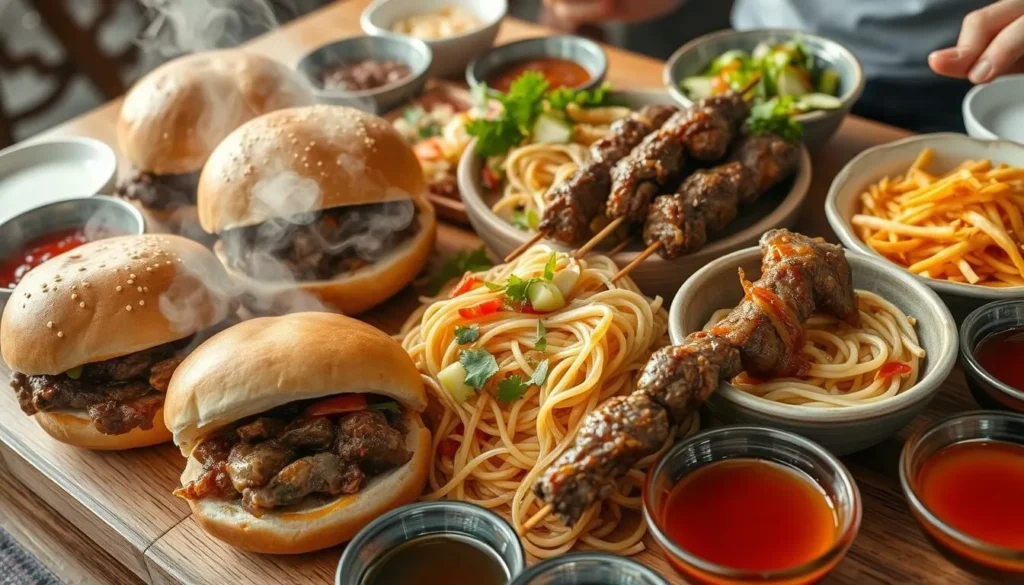
Must-Try Xi’an Dishes
Roujiamo (Chinese Hamburger)
Often called the “world’s oldest hamburger,” this Xi’an specialty consists of slow-cooked, spiced meat (usually pork or beef) stuffed into a freshly baked flatbread. The bread is crispy on the outside and soft inside, perfectly complementing the flavorful meat.
Biang Biang Noodles
These wide, belt-like hand-pulled noodles are a Xi’an signature. Served with chili oil, vinegar, garlic, and vegetables, they’re known for their chewy texture and spicy flavor. The character for “biang” is one of the most complex in Chinese, with 58 strokes.
Yangrou Paomo
This hearty dish consists of pieces of unleavened bread soaked in rich lamb soup with vermicelli noodles and tender pieces of lamb meat. Traditionally, diners tear the bread into small pieces before the broth is added.
Where to Eat in Xi’an
Muslim Quarter
The bustling streets of the Muslim Quarter offer the most authentic street food experience in Xi’an. Wander through the maze of food stalls to sample a variety of local specialties at affordable prices.
Yongxingfang Food Court
This modern food court near the East Gate of the City Wall features over 100 vendors serving Shaanxi specialties in a clean, organized environment. It’s an excellent alternative to the more crowded Muslim Quarter.
Defachang Dumpling Restaurant
Famous for its dumpling banquet featuring dumplings in various shapes, fillings, and cooking methods. Located near the Drum Tower, it’s a popular spot to try Xi’an’s renowned dumplings.
Foodie Tip: Join a food tour on your first day in Xi’an to get oriented to the local cuisine with the help of a knowledgeable guide who can explain the dishes and help you navigate the bustling food streets.
Day Trips from Xi’An
While Xi’an itself offers plenty to explore, several fascinating destinations within a few hours’ drive make for excellent day trips.
Huaqing Palace
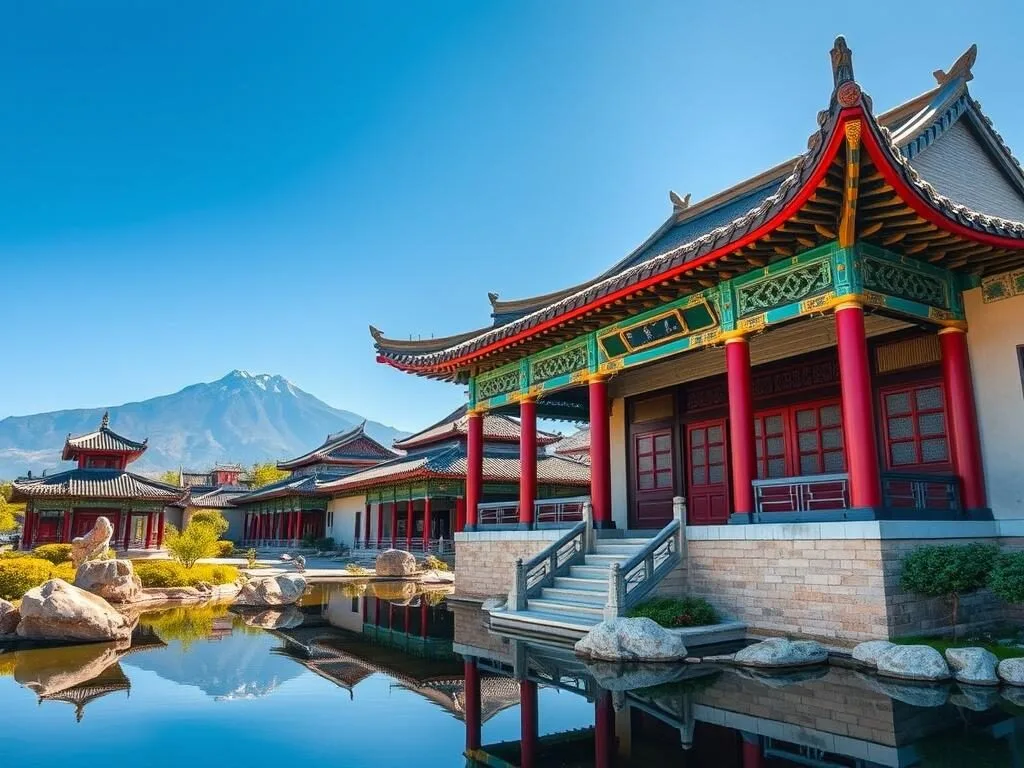
Located at the foot of Mount Li, about 30km from Xi’an, Huaqing Palace is a Tang Dynasty imperial retreat famous for its hot springs and the romantic story of Emperor Xuanzong and his consort Yang Guifei. The “Song of Everlasting Sorrow” performance held here in the evenings dramatizes this legendary love story.
Famen Temple
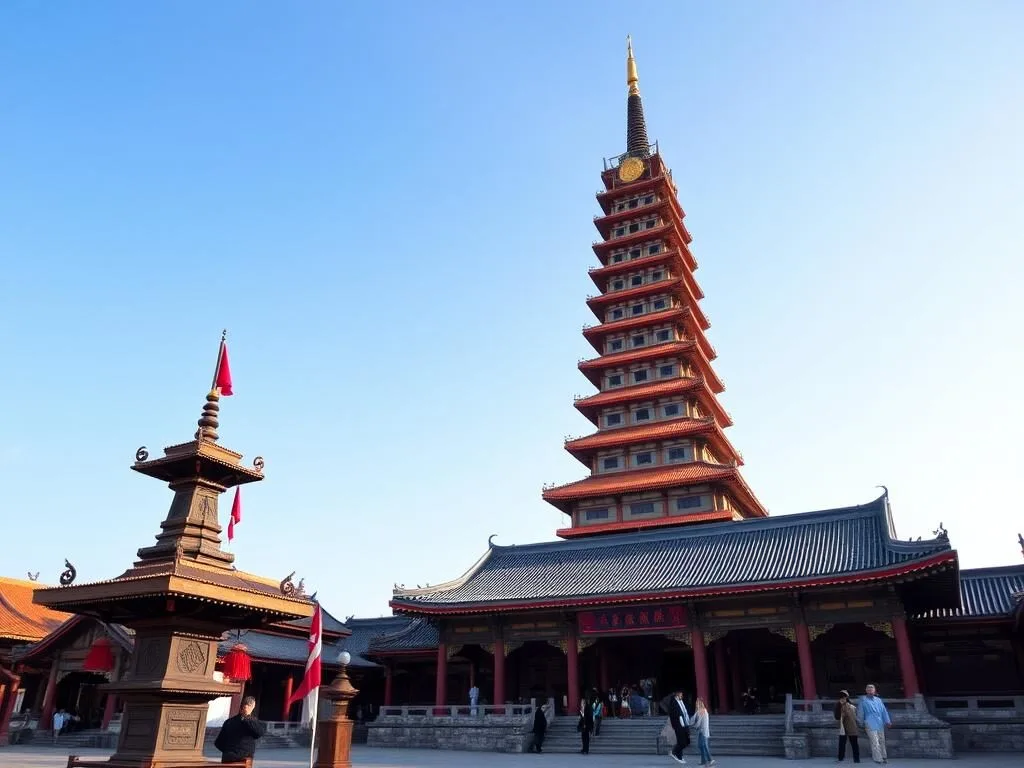
This significant Buddhist temple, located about 120km west of Xi’an, houses a finger bone relic of the Buddha. The modern complex includes an impressive 148-meter pagoda and a museum displaying Tang Dynasty treasures discovered in an underground palace.
Hanyangling Museum
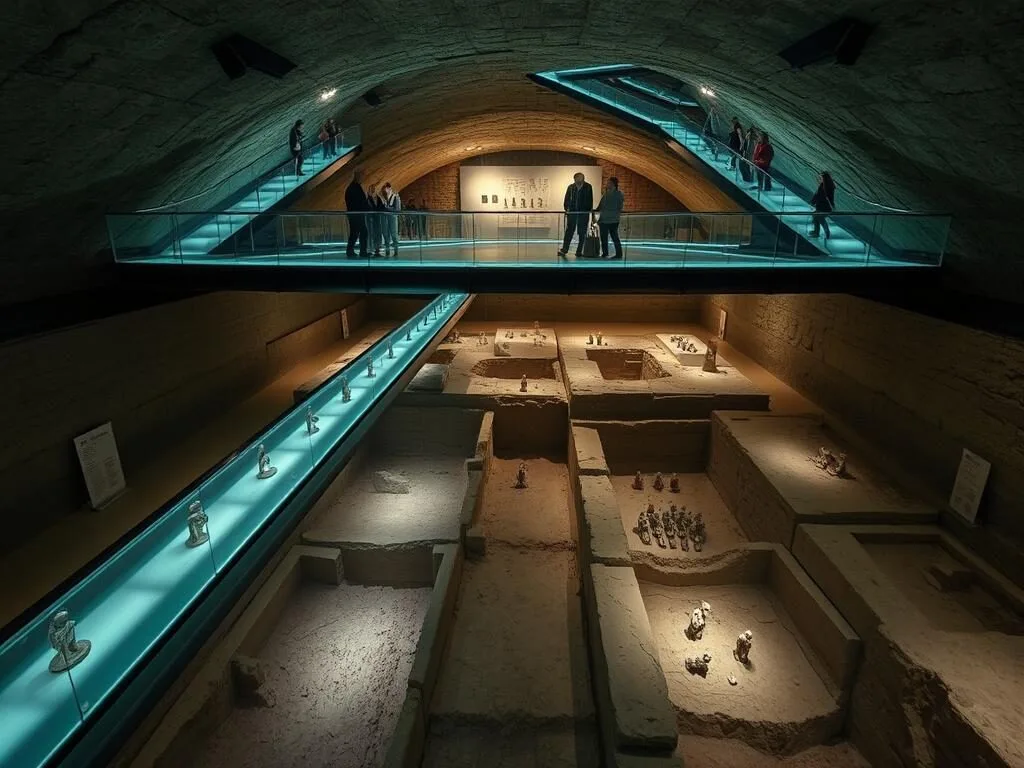
Often called the “Mini Terracotta Army,” this tomb museum of Emperor Jingdi of the Han Dynasty features thousands of smaller figurines and animals. Located near Xi’an Airport, its innovative underground viewing system offers a different perspective than the Terracotta Army.
Explore Beyond Xi’An
Discover the fascinating attractions surrounding the ancient capital:
Book a Day Trip
Practical Tips for Visiting Xi’An
Language
While English is not widely spoken in Xi’an, major tourist sites have English signage. Download translation apps like Google Translate or Baidu Translate before your trip. Having your hotel’s name and address in Chinese characters is helpful for taxi drivers.
Internet & Apps
China’s Great Firewall blocks many Western websites and apps including Google, Facebook, and WhatsApp. Consider getting a VPN before your trip if you need access to these services. WeChat and Alipay are essential for mobile payments in China.
Money
China is increasingly cashless, with most locals using mobile payment apps. However, as a tourist, you’ll need cash for smaller vendors and places that don’t accept foreign credit cards. ATMs are widely available throughout the city.
Safety
Xi’an is generally a safe city for tourists. Standard precautions against pickpocketing in crowded areas like the Muslim Quarter are advised. The biggest challenges are usually related to the language barrier rather than safety concerns.
Etiquette
Basic etiquette includes not pointing with your index finger (use an open hand instead), avoiding excessive physical contact, and removing shoes when entering someone’s home. When receiving business cards or gifts, use both hands as a sign of respect.
Reservations
Many state-owned museums and attractions in China require advance booking, often through WeChat. This includes the Shaanxi History Museum and some sections of the City Wall. Your hotel can often assist with making these reservations.
Packing Tip: Bring comfortable walking shoes for exploring Xi’an’s many historical sites. A portable battery pack is useful for long days of sightseeing, especially if you’re using your phone for navigation and photos.
Sample Xi’An Itineraries
To help you plan your visit, here are some suggested itineraries based on the length of your stay:
2-Day Xi’an Itinerary
Day 1: Start with the Terracotta Army in the morning to avoid crowds. After lunch, visit the Shaanxi History Museum, then explore the Giant Wild Goose Pagoda and enjoy the evening music fountain show.
Day 2: Spend the morning cycling on the Ancient City Wall. In the afternoon, visit the Bell Tower and Drum Tower, then explore the Muslim Quarter for dinner and shopping. End with a Tang Dynasty Show in the evening.
3-Day Xi’an Itinerary
Day 1: Same as Day 1 of the 2-day itinerary.
Day 2: Same as Day 2 of the 2-day itinerary.
Day 3: Take a day trip to Mount Huashan for hiking and spectacular views. Alternatively, visit Huaqing Palace and attend the “Song of Everlasting Sorrow” performance in the evening.
4-Day Xi’an Itinerary
Day 1-3: Follow the 3-day itinerary.
Day 4: Visit the Small Wild Goose Pagoda and Xi’an Museum in the morning. In the afternoon, explore the Hanyangling Museum. Spend your final evening at the Grand Tang Dynasty Everbright City for shopping and entertainment.
Experience the Magic of Xi’An
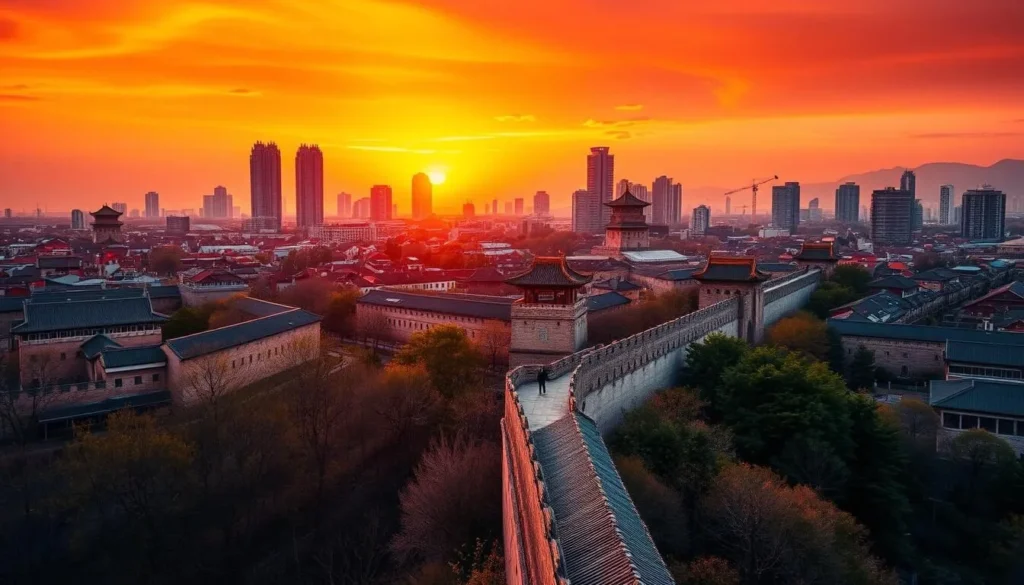
Xi’an isn’t just a city—it’s a living museum where 3,000 years of Chinese history comes alive at every turn. From the awe-inspiring Terracotta Army to the vibrant Muslim Quarter, from ancient city walls to modern cultural performances, Xi’an offers a perfect blend of historical wonders and contemporary experiences that will leave you with unforgettable memories.
As you walk the same streets once traversed by emperors, monks, and Silk Road merchants, you’ll gain a deeper understanding of China’s rich cultural heritage and its continuing influence on the modern world. Whether you’re a history enthusiast, a foodie, an adventure seeker, or simply a curious traveler, Xi’an promises an enriching journey through one of the world’s most fascinating ancient capitals.
Ready to Explore Xi’An?
Start planning your journey to this incredible ancient capital today:
Book Accommodations
Browse Xi’An Tours
—
The above is subject to change.
Check back often to TRAVEL.COM for the latest travel tips and deals.
